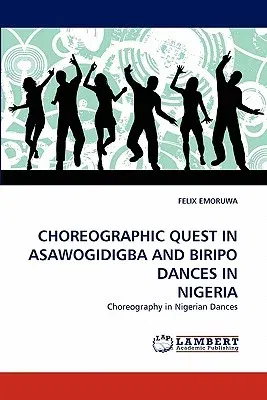Felix Emoruwa
(Author)Choreographic Quest in Asawogidigba and Biripo Dances in NigeriaPaperback, 20 January 2011

Qty
1
Turbo
Ships in 2 - 3 days
In Stock
Free Delivery
Cash on Delivery
15 Days
Free Returns
Secure Checkout
Print Length
140 pages
Language
English
Publisher
LAP Lambert Academic Publishing
Date Published
20 Jan 2011
ISBN-10
3843388768
ISBN-13
9783843388764
Description
Product Details
Author:
Book Format:
Paperback
Country of Origin:
US
Date Published:
20 January 2011
Dimensions:
22.86 x
15.24 x
0.84 cm
ISBN-10:
3843388768
ISBN-13:
9783843388764
Language:
English
Location:
Saarbrucken
Pages:
140
Publisher:
Weight:
213.19 gm

